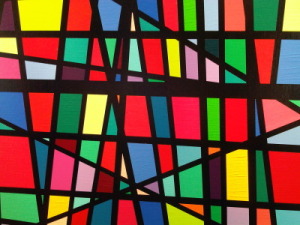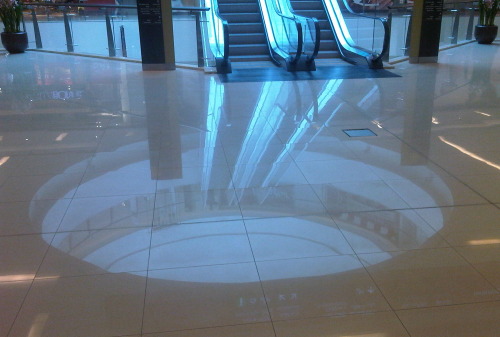Light Through - Electronic Stained Glass
 Tuesday, May 24, 2011 at 7:05PM
Tuesday, May 24, 2011 at 7:05PM There are some days that seem to be filled with colour.
Last week, shortly after my return from the Liwa Desert, I visited a centre in Dubai called Wafi and experienced such a day. Camera in hand, I clicked away. When selecting a few of the images to share in a gallery, I noticed that most of those I had chosen involved light shining through glass.
I was immediately reminded of an interview I had been listening to, in which Jeremy Johnson discussed the terms “light on” and “light through” with John David Ebert.
Light can shine on something or light can shine through something. Marshall McLuhan, a communications theorist, used the terms “light on” and “light through” to highlight the media that went hand in hand with various cultures throughout the ages.
In the west, in the Middle Ages, light had shone through. The stained glass windows of many cathedrals are testimony to this. They told stories to the beholder and were meant to point the one looking to a Presence beyond. The dominant belief at the time was that the light of Spirit was shining through all that was taking place.
The invention of the printing press by Gutenberg in the 15th century had ushered in the Renaissance, an age of “light on”. The printed word had to be looked at. Light had to be shone on the printed word so that the eye could read it.
The digital age has once again ushered in “light through”, and the gadgets we currently use are like electronic stained glass. Their high resolution makes them luminous and beautiful, with light shining in from behind.
These gadgets make it possible for you and I to meet and exchange information immediately. Even right now, our spaces are overlapping. We are sharing a common boundary and an exchange is taking place.
When two entities interconnect, be they systems, concepts, devices, cultures or human beings, the common boundary they share and where an exchange of information and/or energy takes place is known as an interface.
The place where we are currently meeting, I have chosen to call here2here. In it, we are able to “interface” - which I will translate as - meet in the space between our faces. here2here is the common boundary we share right now, a space where our subtle energies meet. In this space, you somehow shine through to me and I shine through to you, with webcams and apps such as facetime providing a possible enhancement of this meeting.
Aaron Koblin in his TED talk, quotes: “The culture of the 19th century was defined by the novel, and the 20th century by the cinema. The culture of the 21st century will be defined by the interface.”
I am of the opinion that the interface will again allow us to become aware of a special light shining through, a light symbolizing the transcendent.
Already the miracle of this is becoming apparent as, for example, interfacing is making it possible for east and west to allow light to flow through to each other.
Special online museums are enabling us to view each other’s art and so learn more about the culture of the other. The resulting fusion is producing new masterpieces.
The exhibition, “Through The Looking Glass” by Syrian artist, Mouteea Murad, is currently running in Dubai. When I viewed the exhibition, I was immediately reminded of stained glass, not knowing then, that this would be the topic of this blog!

I include the picture I took of one of his artworks here, because it symbolizes for me in image, that which I have attempted to say with words.
I include too, a video featuring the music of Jon Hopkins. The piece is entitled, “Light through the veins” and the sounds and images of this video speak too, where words fail.
